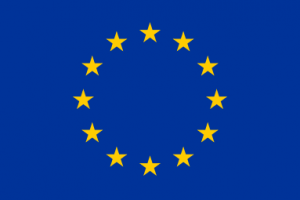The module is focused on the quantum technologies and the revolution they triggered. Special attention is paid to quantum computing and quantum communication, addressing some protocols and algorithms such as teleportation, cryptography and quantum random walk that are enabling the development of very new technological possibilities. The protocols are treated both for their key role in the Second Quantum Revolution and for their applications and implications at the social, political, economic, scientific, ethical, environmental, and educational levels. The module exploits the conceptual structure of the quantum algorithms as a source of words and epistemic forms of reasoning that can stimulate critical thinking and new ways to talk and imagine futures as well as the relationships between human-technologies-nature
The module was not designed from scratch in FEDORA, but FEDORA’s themes have been further highlighted by stressing more explicitly the interdisciplinary, future, and linguistic dimensions, that are intrinsic to the topic.
Quantum technologies are a typical STEM topic. As such, they are interdisciplinary, embedding knowledge from sciences like physics, computer science, technology, engineering and mathematics. Because of their strong impact on society, they also arise ethical, political, philosophical, and socio-economical issues.
The conceptual, linguistic and epistemic structure of quantum physics deeply questions the Newtonian view of the future, as linearly and deterministically determined by the present (and the past). The quantum evolution of a superposition of possible states, the genuine random collapse in one possible state through measurement and the possibility to manage uncertainty make quantum technologies an incredibly rich context to develop future scaffolding skills. In fact, the topic requires the development of the language of possibilities, uncertainty and complexity and these are all great resources to enhance imagination toward futures and build future scenarios.
- learning the basic concepts and main themes needed to understand the scope of the second quantum revolution;
- unpacking quantum procol to show how they embed knowledge and forms of reasoning of different disciplianry fields (physics, mathematics, coputer science, engeening) and searching for new langueges;
- developing awareness and critical thinking about the Second Quantum Revolution and its impact on different dimensions such as research, society, politics, economics, etc.;
- being able to compare the classical and quantum approach to the epistemic themes of certainty-uncertainty, future, causality, randomness, and interaction;
- learning the basic concepts of future studies such as scenarios, cone of the futures, foresight, backcasting, feedback loops, contingency, agency.
The module consists of about 20 hours. The reasoning throughout the module guides the students along its multi-layered structure. The first slots aim to build the conceptual base, by introducing the key concepts of state preparation, evolution and measurement, and entanglement. An epistemological comparison with classical physics leads the students to recognize the groundbreaking character of quantum physics on foundational themes like certainty-uncertainty, future as singular or future is plural, causality and randomness, local or at a distance interaction. The reasoning goes on to see how these concepts are applied to analyse the key protocols of teleportation, cryptography and quantum random walk. Contextually, the applications and implications of quantum technologies on society, politics, economics, etc. are analysed and the basic concepts of future literacy are introduced. As the final activity, the students are asked to put themselves in the shoes of a city’s mayor, and decide whether or not to invest in quantum technologies, after careful exploration of possible scenarios and through back-casting.
